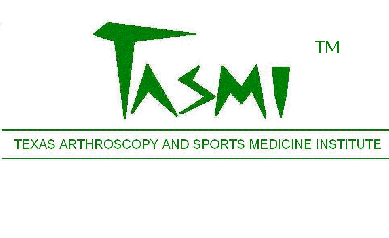|
| |
Basic Science Research
 | Cyclic Testing of Arthroscopic Knot Security.
Presented at the 2003 annual meeting of the Arthroscopy Association of North
America and published in the journal Arthroscopy in 2004, this investigation
evaluated the holding power of several arthroscopic knots. Surgeons have long
used knots to secure soft tissue repairs. The knots hold the tissue apposed
until tissue healing occurs. Some tissues (such as skin) heal within days,
whereas others (such as tendons) take many weeks or even months. During this
time, the knot is subjected to hundreds and possibly even thousands of cyclic
loads with daily use of the repaired joint or extremity. The standard knot of
open surgery for secure repairs that can withstand such prolonged and
repetitive loading is the hand-tied surgical square knot. Recently, minimally
invasive arthroscopic techniques have evolved to the point of allowing
surgeons to repair soft tissue without open surgery. However, because tying
square knots is not feasible with arthroscopic techniques, many different
arthroscopic knots have been introduced into current use. Prior to this TASMI
funded investigation, none of these knots had been tested under hundreds of
cyclic loads to see if they hold up to these stresses as well as traditional
square knots. This investigation revealed that one of the three different
types of arthroscopic knots tested was just as secure as the traditional
square knot hand-tied using open surgical means. However the other two
arthroscopic knots proved to be inferior to the square knot. This was the
first published study of its kind, as each knot was tested for more than 2000
cycles! |
 | Security of Knots Tied with Ethibond, Fiberwire,
Orthocord, or Ultrabraid. This laboratory investigation, published in late 2008
in the American Journal of Sports Medicine, compared the
strength of several popular arthroscopic knots, including one knot developed
at TASMI, to knots tied in open surgery. What distinguished this from all
prior work was that these numerous sutures were tested with a stepwise,
incremental, cyclic loading protocol that comes closer to reproducing the
forces seen on repaired structures after surgery than any other published
protocol. Fortunately, all of the arthroscopic knots proved to be as
secure as the openly tied knots. However, the SAK knot, developed at TASMI,
had the lowest profile, making it the least likely to cause tissue irritation
following surgery. The investigation went on to test newer super-strong
sutures that were introduced only a few years ago. Knots tied with these
newer sutures were much more secure than those tied with traditional
suture. |
|
